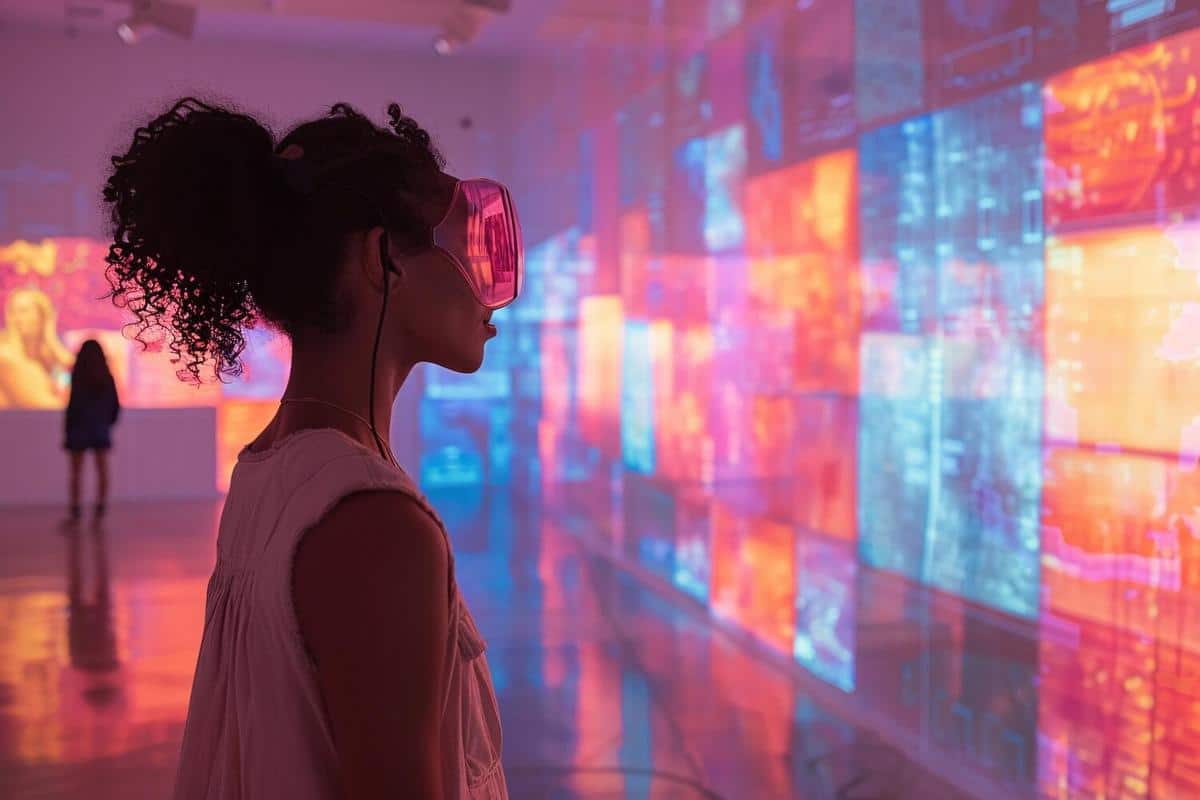
Augmented Reality in Art: Merging Digital and Physical Realities
Augmented reality (AR) is revolutionizing the art world, blending the digital and physical realms to create a new frontier of artistic expression.
As technology continues to evolve, artists are finding innovative ways to integrate augmented reality into their work, offering audiences an immersive experience that transcends traditional boundaries. This transformative approach is not just about adding digital layers but also about enhancing the storytelling aspect of art.
Exploring the Intersection of AR and Art
One of the most compelling aspects of AR in art is its ability to create interactive experiences. According to art curator and digital innovation advocate Dr. Emily Carter, “AR allows artists to break free from the limitations of physical space, inviting viewers to engage with art in a dynamic and personal manner.” This sentiment is echoed by many in the art community who view AR as a tool for democratizing art access, allowing people from various locations to experience art as it was intended.
Statistics and Research
Recent studies indicate that 67% of consumers are more likely to engage with brands that offer an AR experience, highlighting its potential to attract and retain audiences. Moreover, the global AR in the art market is projected to grow significantly, reaching new heights by 2025.
Personal Anecdote: An Artist’s Perspective
Artist and AR pioneer Luca Martinez shares, “Incorporating AR into my installations has transformed how audiences perceive my work. It’s no longer just about viewing art—it’s about experiencing it.” Luca’s use of AR to animate static images and create soundscapes has garnered attention, making his exhibitions a must-see for tech-savvy art enthusiasts.
Actionable Tips for Artists
- Experiment with AR Apps: Many platforms offer user-friendly tools for artists to integrate AR into their work without needing extensive tech knowledge.
- Collaborate with Technologists: Partnering with software developers can help bring more complex AR visions to life.
- Engage Your Audience: Use AR to create interactive elements that encourage viewer participation, making the art experience more memorable.
The Role of AR in Art Education
AR is also making waves in art education, offering students and educators new ways to explore art history and techniques. Through AR, learners can visualize historical art pieces in their original context or practice skills using virtual tools that simulate real-world art-making processes.
Table: Comparison of Traditional Art vs. AR Art
| Aspect | Traditional Art | AR Art |
|---|---|---|
| Interactivity | Limited | High |
| Accessibility | Physical location | Global, digital |
| Cost | Materials, space | Software, devices |
| Audience Engagement | Passive | Active |
| Preservation | Physical care | Digital storage |
| Innovation | Traditional techniques | Cutting-edge technology |
| Feedback Loop | Delayed | Instant |
| Scalability | Limited by space | Virtually limitless |
FAQs
What is augmented reality in art?
Augmented reality in art is the integration of digital elements into physical artworks, creating an enhanced interactive experience for viewers.
How can artists start using AR?
Artists can start by exploring AR apps and platforms that offer tools for integrating digital content with physical artworks. Collaborating with AR developers can also help artists realize more complex projects.
Why is AR important for the art world?
AR is important because it expands the possibilities of artistic expression, reaching wider audiences and creating more engaging and memorable experiences.
Conclusion
Augmented reality is reshaping the landscape of art, offering new tools for creativity and engagement. As artists continue to explore this digital frontier, the potential for groundbreaking work is limitless. Dive into the world of AR art and discover how digital innovation can enhance your artistic journey.